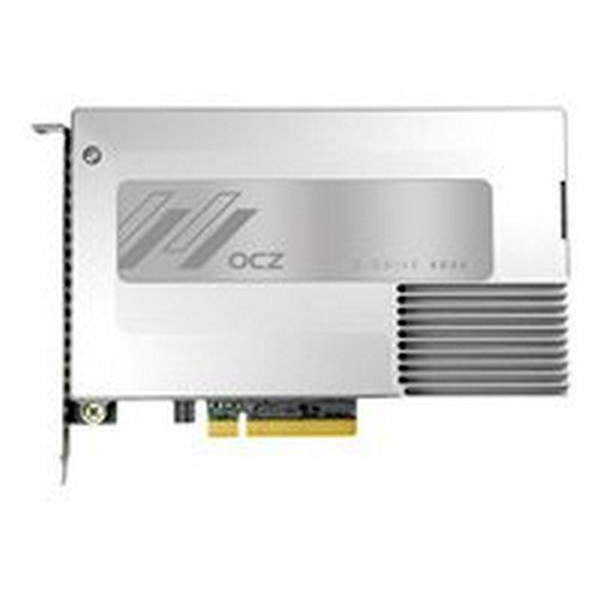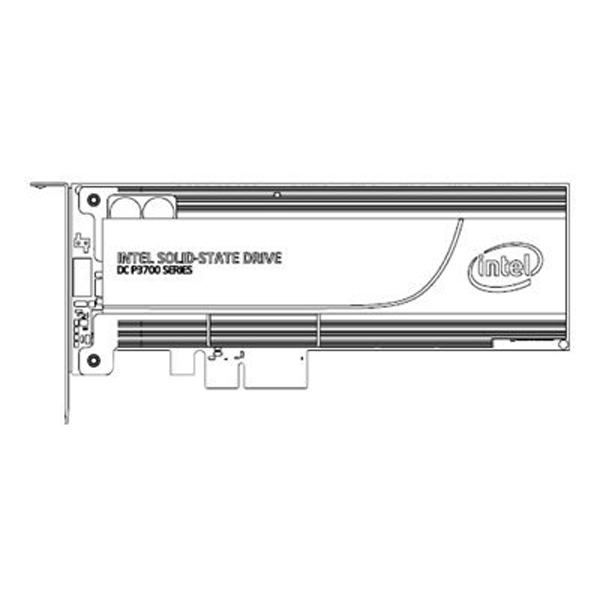Intel SSD DC P3700 800GB and 1.6TB Review: The Future of Storage
With the introduction of its SSD DC P3700, P3600, and P3500, Intel is giving us our first taste of the PCIe-based NVMe specification. We take the flagship P3700 for a drive in its 800 GB and 1.6 TB incarnations. Just how fast is the future of storage?
How We Tested Intel's SSD DC P3700
| Test Hardware | |
|---|---|
| Processor | Intel Core i7-3960X (Sandy Bridge-E), 32 nm, 3.3 GHz, LGA 2011, 15 MB Shared L3, Turbo Boost Enabled |
| Motherboard | Intel DX79SI, X79 Express |
| Memory | G.Skill Ripjaws Z-Series (4 x 4 GB) DDR3-1600 @ DDR3-1600, 1.5 V |
| System Drive | Intel SSD 320 160 GB SATA 3Gb/s |
| Tested Drives | Intel SSD DC P3700 800 GB and 1.6 TB |
| Graphics | AMD FirePro V4800 1 GB |
| Power Supply | OCZ ModXStream Pro 700 W |
| System Software and Drivers | |
| Operating System | Windows 7 x64 Ultimate/Windows Server 2012 R2 |
| DirectX | DirectX 11 |
| Driver | Graphics: AMD 8.883 |
| Benchmark Suite | |
| Iometer v1.1.0 | Four Workers, 4 KB Random: LBA=Full, Span Varying Queue Depths |
| ATTO | v2.4.7, 2 GB, QD=4 |
| Custom | C++, 8 MB Sequential, QD=4 |
| Enterprise Testing: Iometer Workloads | Read | Write | 512 Bytes | 1 KB | 2 KB | 4 KB | 8 KB | 16 KB | 32 KB | 64 KB | 128 KB | 512 KB |
|---|---|---|---|---|---|---|---|---|---|---|---|---|
| Database | 67% | 100% | n/a | n/a | n/a | n/a | 100% | n/a | n/a | n/a | n/a | n/a |
| File Server | 80% | 100% | 10% | 5% | 5% | 60% | 2% | 4% | 4% | 10% | n/a | n/a |
| Web Server | 100% | 100% | 22% | 15% | 8% | 23% | 15% | 2% | 6% | 7% | 1% | 1% |
The Storage Networking Industry Association (SNIA), a working group made up of SSD, flash, and controller vendors, has a testing procedure that attempts to control as many of the variables inherent to SSDs as possible. SNIA’s Solid State Storage Performance Test Specification (SSS PTS) is a great resource for enterprise SSD testing. The procedure does not define what tests should be run, but rather the way in which they are run. This workflow is broken down into four parts:
- Purge: Purging puts the drive at a known starting point. For SSDs, this normally means Secure Erase.
- Workload-Independent Preconditioning: A prescribed workloadthat is unrelated to the test workload.
- Workload-Based Preconditioning: The actual test workload (4 KB random, 128 KB sequential, and so on), which pushes the drive towards a steady state.
- Steady State: The point at which the drive’s performance is no longer changing for the variable being tracked.
These steps are critical when testing SSDs. It’s incredibly easy to not fully condition the drive and still observe out-of-box behavior, which may lead one to think that it’s steady-state. These steps are also important when going between random and sequential writes.
For all performance tests in this review, the SSS PTS was followed to ensure accurate and repeatable results.
All tests employ random data, when available. Intel's SSD DC P3700 does not perform any compression prior to writing, so there is no difference in performance-based data patterns. We also chose to focus our comparisons on the Micron P320h and P420m, which are quite similar in performance and architecture. Both employ a proprietary driver that, while not NVMe, yields a very close approximation.
Get Tom's Hardware's best news and in-depth reviews, straight to your inbox.
Current page: How We Tested Intel's SSD DC P3700
Prev Page Intel's SSD DC P3700: Up Close and Personal Next Page Results: 4 KB Random Performance and Latency-
xback In the 1st table on page 1, the "4k random write IOPS" are reversed :)Reply
(3500 scores highest, while the 3700 scores lowest) -
redgarl OCZ already went there and even made their own connector for providing more bandwith to SSD... just a shame that now Intel try to remove the carpet from beneath the feet of OCZ. Well, old tech is new tech.Reply
By the way, OCZ revodrive was priced similarly, I don't see that big fuzz from Toms here. -
Nuckles_56 "Intel's 2 TB model purportedly needs 650 LFM across the drive"Reply
What the hell is LFM? -
JeanLuc The active power consumption numbers on first table are wrong (I hope!) 35,000 watts active?Reply
Edit:
It's not actually wrong it might just be my out of date browser I'm using in the office but for me the numbers aren't lining up correctly. -
pjmelect Reply"Intel's 2 TB model purportedly needs 650 LFM across the drive"
What the hell is LFM?
Linear Feet per Minute of airflow
-
pjmelect Reply"Intel's 2 TB model purportedly needs 650 LFM across the drive"
What the hell is LFM?
Linear Feet per Minute of airflow
-
Nuckles_56 Reply13947314 said:"Intel's 2 TB model purportedly needs 650 LFM across the drive"
What the hell is LFM?
Linear Feet per Minute of airflow
Ah that makes sense now

